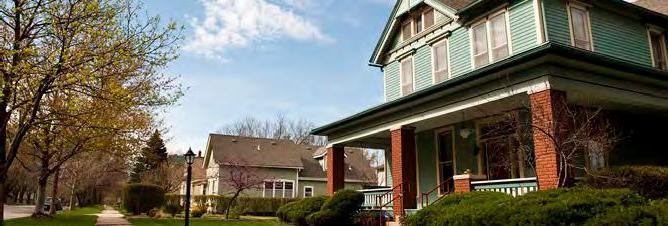
3 minute read
Home Inspection
WHAT TO KNOW
ABOUT THE HOME INSPECTION
Advertisement
Some items should always be examined.
STRUCTURE The home’s “skeleton” should be able to stand up to weather, gravity, and the earth that surrounds it. Structural components include items such as the foundation and the framing.
EXTERIOR The inspector should look at sidewalks, driveways, steps, windows, doors, siding, trim, and surface drainage. They should also examine any attached porches, decks, and balconies.
ROOFING A good inspector will provide very important information about your roof, including its age, roof draining systems, buckled shingles, and loose gutters and downspouts. They should also inform you of the condition of any skylights and chimneys as well as the potential for pooling water.
PLUMBING They should thoroughly examine the water supply and drainage systems, water heating equipment, and fuel storage systems. Drainage pumps and sump pumps also fall under this category. Poor water pressure, banging pipes, rust spots, or corrosion can indicate larger problems.
ELECTRICAL You should be informed of the condition of service entrance wires, service panels, breakers and fuses, and disconnects. Also take note of the number of outlets in each room. HEATING AND AIR CONDITIONING The home’s vents, flues, and chimneys should be inspected. The inspector should be able to tell you the water heater’s age, its energy rating, and whether the size is adequate for the house. They should also describe and inspect all the central air and through-wall cooling equipment.
INTERIORS Your inspector should take a close look at walls, ceilings and floors; steps, stairways, and railings; countertops and cabinets; and garage systems. These areas can reveal leaks, insect damage, rot, construction defects, and more.
VENTILATION/INSULATION Inspectors should check for adequate insulation and ventilation in the attic and in unfinished areas such as crawl spaces. Insulation should be appropriate for the climate. Without proper ventilation, excess moisture can lead to mold and water damage.
FIREPLACES They’re charming, but fireplaces can be dangerous if they’re not properly installed. Inspectors should examine the vent and flue, and describe solid fuelburning appliances.
THE BASICS | BUYER
WHAT TO KNOW
ABOUT HOME HAZARDS
RADON A colorless, odorless gas that can seep into your home from the ground, radon is often referred to as the second most common cause of lung cancer behind smoking.
What to look for: Basements or any area with protrusions into the ground offer entry points for radon. The Environmental Protection Agency publishes a map of high-prevalence areas. A radon test can determine if high levels are present.
ASBESTOS A fibrous material once popular as fire-resistant insulation, asbestos was banned in 1985. However, it’s often found in the building materials, floor tiles, roof coverings, and siding of older. If disturbed or damaged, it can enter the air and cause severe illness.
What to look for: Homes built prior to 1985 are at risk of having asbestos in their construction materials. Home owners should be careful when remodeling because disturbing insulation and other materials may cause the asbestos to become airborne.
LEAD This toxic metal used in home products for decades can contribute to several health problems, especially among children. Exposure can occur from deteriorating lead-based paint, pipes, or leadcontaminated dust or soil.
What to look for: Homes built prior to 1978 may have lead present. Look for peeling paint and check old pipes. To get a HUD-insured loan, buyers must show a certificate that their older home is lead-safe. OTHER HAZARDOUS PRODUCTS Stockpiles of hazardous household items — such as paint solvents, pesticides, fertilizers, or motor oils — can create a dangerous situation if not properly stored. They can easily spark fires and can cause illness or even death if ingested, even in small amounts. What to look for: Check all the corners, crawl spaces, garages, or garden sheds in the home. If these products are found, make sure you ask for their removal and get a disposal certificate prior to closing.
GROUNDWATER CONTAMINATION When hazardous chemicals are disposed of improperly, they can seep through the soil and enter water supplies. A leaking underground oil tank or septic system can contribute to this.
What to look for: Homes near light industrial areas or facilities may be at risk, as are areas once used for industry that are now residential.





